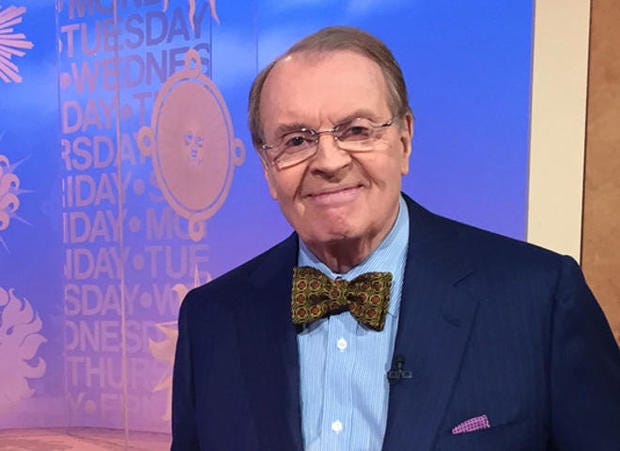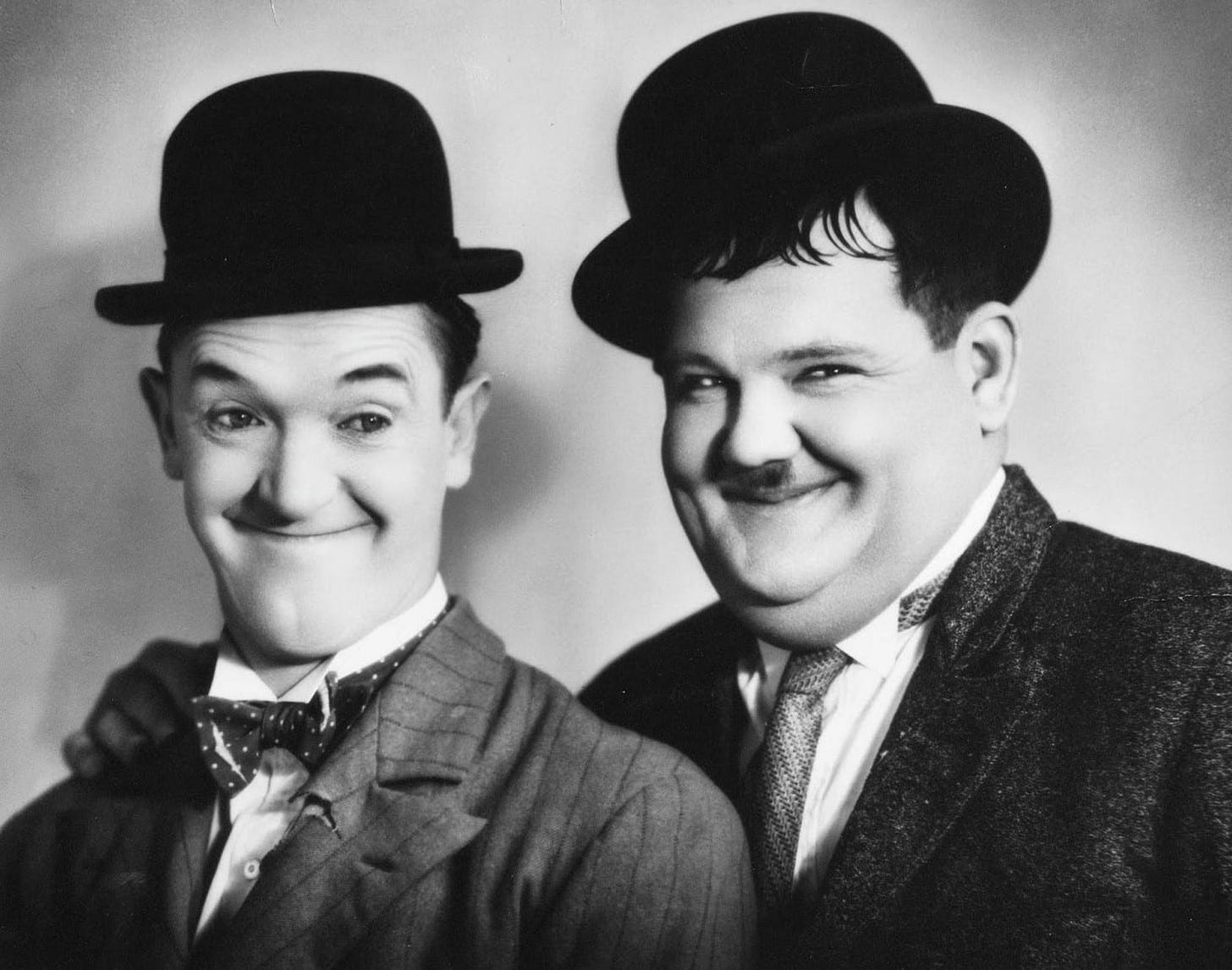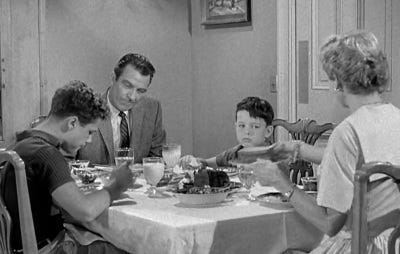Bow Ties, Beaumont, and Why Not Try a Little Brotherhood, Brother?
Charles Osgood died at the age of 91. He was for many years the host of CBS News Sunday Morning and a radio spot called The Osgood File, though Osgood was his middle name, as in Charles Osgood Wood, III, which conjures up a picture of a rich guy dressed in white on the deck of his yacht, holding a gin gimlet and waxing lyrical about good times with fraternity brothers back at grand old Princeton. But that wasn’t Osgood. He was a scruffy reporter who kind of fell into becoming a radio announcer and worked his way into a mainstay on CBS.
Osgood’s trademark was a bow tie, the authentic kind that you actually tie. That’s a skill I never learned.
I did wear a bow tie in my youth, the clip-on variety, when going to Sunday School. You dressed up for that in those days. When I practiced law I never wore a bow tie, though there’s no reason I couldn’t have, it’s just that they were so rarely seen in courtrooms that if you wore one you’d probably have the jury thinking you were an eccentric rather than a sharp lawyer pleading a client’s cause.
My dad was a sharp lawyer and could get away with wearing a bow tie because he was something of a character. A bit rotund, he could rock a bow along with his ever-present cigar. He looked a little like Winston Churchill, another famous cigar-smoking-bow-tie wearer.
One might associate the bow tie with a certain level of intellect and sophistication—George F. Will used to rock a bow—until you realize it was also the fashion choice of Pee Wee Herman. Which reminds me: Stan Laurel sported a bow, while Oliver Hardy wore that necktie he was always fiddling with. Neither one was a sophisticate. (In fact, the way to watch Laurel and Hardy is to think of them as toddlers in grown-up bodies, with Ollie being the older, bossier brother.)
What’s the deal with ties, anyway (he asked, sounding like 1988 Jerry Seinfeld)? Scholars trace the origins of the necktie to the year 1636 when King Louis XIII of France hired Croatian mercenaries to help fight in The Thirty Years War (which had something to do with Protestants and Catholics killing each other). These mercs used colorful neckwear to secure their jackets. King Louis thought it looked cool and adopted it. He called it a cravate, the French derivation of a Croatian word for scarf. When the fashion moved to England, cravat became the name. Coach drivers in England were the first to use slip knots in their cravats, to prevent them from blowing all over the place in the wind. The upper classes adopted ties as a way to show membership in exclusive clubs and professions.
By the mid-20th century, men who went out in public usually wore a coat and tie. Look at pictures of crowds at baseball games from that era. You see a lot of straw hats with coats and ties under them. Men dressed up to go out to dinner or the movies, or just to a cocktail party at a neighbor’s house.
In fact, the next time you watch an episode of Leave It To Beaver, you’ll see that at dinner Ward always wore a coat and tie. June always wore a dress and string of pearls. (Barbara Billingsley, who played June, was embarrassed by a dimple on her throat, which is why she always wore the pearls, even when vacuuming the house!)
Hugh Beaumont, who played Ward, was a nice guy who had a Masters in Theology from USC. In 1970 he suffered a severe stroke that put him in a wheelchair for the rest of his life, with speech impaired. But he fought back and managed to do some directing in community theater. One of those plays was put on at the Woodland Hills Community Church, a half mile from where I grew up. Tony Dow, who played Wally on Beaver, was the lead in the play. His understudy was yours truly. I was just beginning the acting phase of my life. So I got to sit in on the rehearsals and watch Hugh Beaumont doing all in his power to direct in his condition. Kind of inspiring.
Leave It To Beaver was one of those 1950s and early 60s TV shows that portrayed an ideal family life, leading the academic snobs and snoots to huff and puff, “Life was never like that.”
Which misses the point entirely. To hold up an ideal in art is not to replicate reality, but to awaken us to the possible, give us something to aspire to, call us higher. And entertain, too. Imagine that.
I write thrillers to entertain, but also have a little “something to say” along the way. Dean Koontz is a master of that kind of fiction (he’s sold a few books in his lifetime). He calls it “noble” to offer a few hours of relief from the madness around us. I agree.
The animating theme of all my books is justice. And the animating form (at least what I strive for) is can’t-put-it-down, page-turning entertainment.
The old pulp writers were that way, too. In the “golden age” of the pulps, the 1920s through the late 1940s, many writers eked out a living at the typewriter, but only if they wrote stories that compelled busy readers to keep on flipping those pages.
And speaking of The Thirty Years War (we were, weren’t we?) I’m reminded of Tom Lehrer, the great satirist of song, and his little ditty titled “National Brotherhood Week.” It was released in 1965 amidst calls for an official week of kindness toward those upon whom we normally cast a jaundiced eye. Part of it goes like this:
Oh, the Protestants hate the Catholics
And the Catholics hate the Protestants
And the Hindus hate the Moslems
And everybody hates the Jews.
But during National Brotherhood Week
National Brotherhood Week
It's National Everyone-smile-at-one-another-hood Week
Be nice to people who
Are inferior to you.
It's only for a week, so have no fear.
Be grateful that it doesn't last all year!
And here at Whimsical Wanderings, it’s kindly-ask-for-your-financial-support week so I can keep on keeping on with some escapist entertainment via the written word. Just click on the button below. Thank you for your consideration!





As always, I enjoyed "brain hopping" with you. I loved Leave it to Beaver. It never occurred to me that it was weird to see the dad in a suit & the mom in dress, high heels, & pearls. Quite a contrast to my family. Daddy came to the table in dirty work clothes (because supper was not the end of his work day). Mother wore a work dress & apron, and shoes that could run out to head off cows that escaped their fence, if necessary. We kids wore jeans & work shirts after school, but my brother wore starched jeans (with a crease that Mother or I ironed in there) & a nice starched shirt. My sister & I wore dresses, no matter how cold or how hot it was. "Beaver" was a nice diversion from our daily, as was Lucy and Bonanza.
Aww, I liked Charles Osgood! Love reading your Whimsical Wanderings.
And from the way your subject jumps sometimes, I'm beginning to think you're ADHD...like me. ;-)